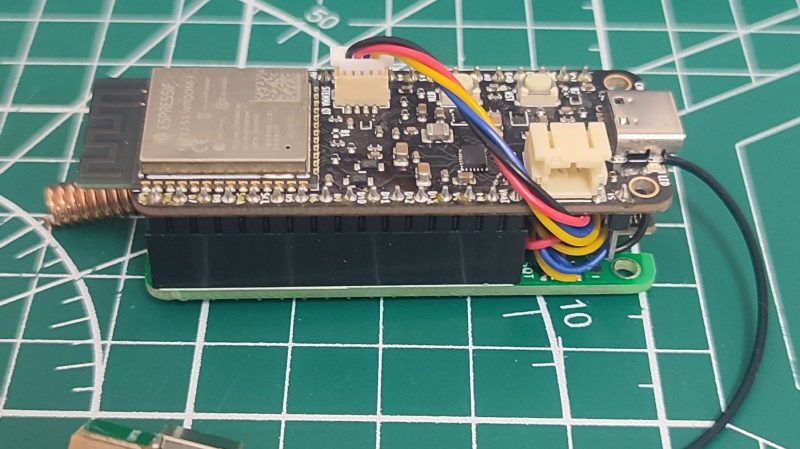Sometimes you need to create a satellite navigation tracking device that communicates via a low-power mesh network. [Powerfeatherdev] was in just that situation, and they whipped up a particularly compact solution to do the job.
As you might have guessed based on the name of its creator, this build is based around the ESP32-S3 PowerFeather board. The PowerFeather has the benefit of robust power management features, which makes it perfect for a power-sipping project that’s intended to run for a long time. It can even run on solar power and manage battery levels if so desired. The GPS and LoRa gear is all mounted on a secondary “wing” PCB that slots directly on to the PowerFeather like a Arduino shield or Raspberry Pi HAT. The whole assembly is barely larger than a AA battery.
It’s basically a super-small GPS tracker that transmits over LoRa, while being optimized for maximum run time on limited power from a small lithium-ion cell. If you’re needing to do some long-duration, low-power tracking task for a project, this might be right up your alley.
LoRa is a useful technology for radio communications, as we’ve been saying for some time. Meanwhile, if you’ve got your own nifty radio comms build, or anything in that general milleu, don’t hesitate to drop us a line!















Nice! Cute and simple project
ESP32 and STM32 can be used to implement 64, 128, 256, 512 … integer arithmetic
using memory register technology taught by 8080 and 8051 fig forth implementers?
ARM M and A series, … and even x86/x64 platforms too?
How does this compares to heltec v3?
ESP32 is overkill and power hungry for Lora, more elegant solution would be STM32.
Behold, the new “it could have been a 555”
No. He´s right. For a low-power device one want to hunt every nA. An STM32U0 combined with a power harvesting chip like the BQ25570 and a smallish solar panel and a small supercap would go a very long way compared to this solution.
this is a “work with the devil you know” situation, it likely has spectacular performance for the intended application. remember “good enough” is how 99% of engineering gets accomplished.
Make it work, make it work better, make it pretty.
Except the power profiles are indeed very different.
So… How long until I have a pet tracker of acceptable size to hang in my cat’s harness that doesn’t rely on cellphone networks nor on the Bluetooth connection of random people’s phones?